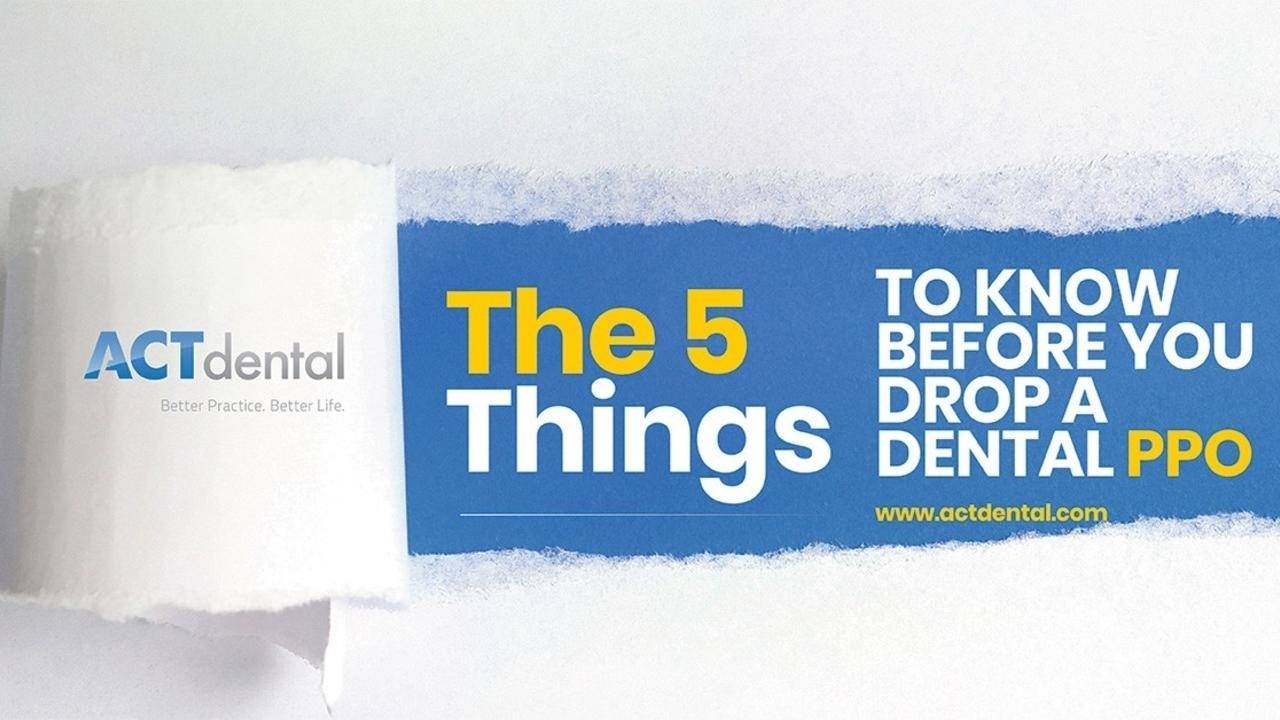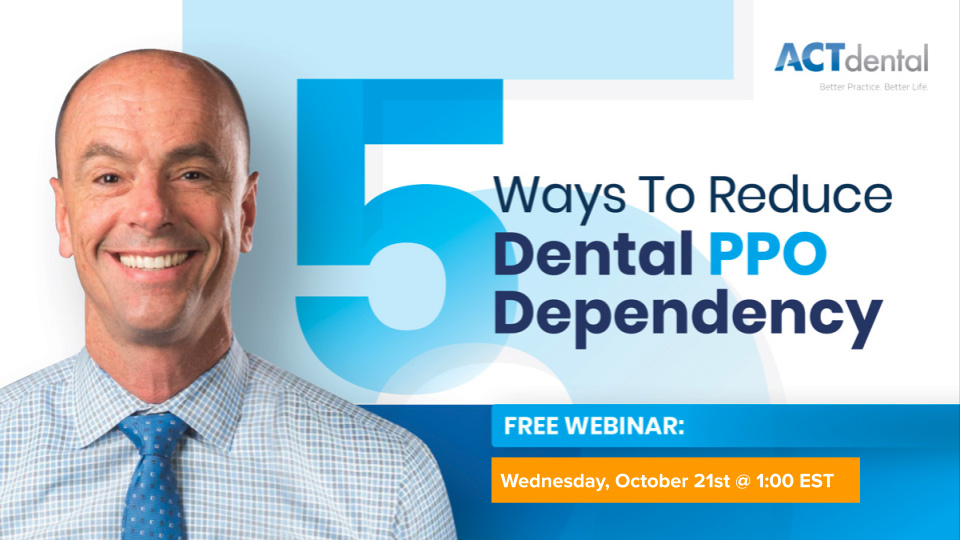If you are beginning to ponder whether or not a transition away from in-network dental insurance participation is the right option for you, there are likely many questions circling around in your mind.
Will I stop getting new patients in the door?
How many patients am I going to lose?
If I lose all the patients with in-network insurance, will I still be ok?
How much production will I lose?
How much money am I going to lose?
It’s a lot to ponder, and you are right, to be pondering these questions.
What I know to be true is that transitioning away from or simply lessening your dependence on dental insurance can be done, and your practice can still thrive! The important thing is to not make this decision hastily. With some solid analysis of practice data, you can make an informed decision, and establish a plan that works best for your practice, your team, and your goals.

So where to begin? The task of transitioning away from heavy insurance participation can seem daunting but don’t worry, we’ve got you! Let’s start with five pieces of data to gather as you begin this process, and why they are important.
1. List out EVERY plan you are in-network with, and gather the contract information. This step might sound simple, but don’t skip it! With the rise of shared agreements, you may find that you are now in-network with more plans than you originally thought. As you begin the process, take a look at each plan. Make sure you have the most up to date fee schedule and determine if and when your fees can be renegotiated. You also should identify when your contract renews, and the amount of notice (some plans require a six-month lead) that is required before you go out of network. Dropping some plans right now might not even be an option based on your contract, and this is important information to know as you begin this work.
2. What is your active patient count? Before you can have any clue how these changes will potentially impact your practice, you must know how many active patients you have. An active patient is one who has been seen in the office within the last 18 months. I’ve often seen dentists calculate their percentage of insurance patients based on the number of patients in their software instead of using the active patient count to make this calculation. This can greatly skew your numbers, so do not skip this step!
3. Of those active patients, how many participate with each insurance plan. Knowing the total number of patients within your active base who participate with each plan will help you to understand the potential attrition that you could (and this is a big could) lose with a change in network status. Use this date to arrange your plans from highest to lowest percentage of participation to being strategically planning your actions.
4. Determine the annual collections and average adjustments for each plan. Not all PPO’s are created equal, and this is important data to collect and understand. Not only do you need to know how many patients utilize each plan, but you also need to know what income is generated from these patients, as well as the amount of money being left on the table. You may find, on the whole, you take only minor adjustments for some plans, while others take a much bigger piece of the pie.
5. Determine on average, how many new patients you see from each plan per month. As you analyze your plans, make sure not to overlook this important data piece. If a plan is bringing in a large percentage of your new patients each month, you may choose to look into negotiating fees before you look to drop the plan. You may want to investigate additional ways to bring in new patients other than simply being “in their plan”.
Transitioning away from heavy PPO participation is exciting, yet we know it can be a nerve-wracking experience for many dentists. The more you plan and prepare, the less nervous you will become.
You can do this, and if you need help, we are here to guide you. This process does not need to be drastic or happen all at once. The teams that manage this transition best always do it with a plan in place, knowing all of the potential gains and losses. The truth is you may not drop all plans, it might not make sense for your practice, and that is just fine. The important thing I want you to understand is that this process can be managed so it does not destroy your practice or your profitability.
Categories

Get access to the best dental educators on the planet to bring you "best practices" and help you become the dentist you were called to be. Watch what you want, when you want it. It's 24/7 on-demand access. Friday's we host "Master Classes" with the very best dental speakers you will ever see.

Reserve your spot at the next ACT Dental Master Class
Learn From One of the Best Educators During Our BEST PRACTICES MASTER CLASS Experience.
Kirk Behrendt
Kirk Behrendt is a renowned consultant and speaker in the dental industry, known for his expertise in helping dentists create better practices and better lives. With over 30 years of experience in the field, Kirk has dedicated his professional life to optimizing the best systems and practices in dentistry. Kirk has been a featured speaker at every major dental meeting in the United States. His company, ACT Dental, has consistently been ranked as one of the top dental consultants in Dentistry Today's annual rankings for the past 10 years. In addition, ACT Dental was named one of the fastest-growing companies in the United States by Inc Magazine, appearing on their Inc 5000 list. Kirk's motivational skills are widely recognized in the dental industry. Dr. Peter Dawson of The Dawson Academy has referred to Kirk as "THE best motivator I have ever heard." Kirk has also assembled a trusted team of advisor experts who work with dentists to customize individual solutions that meet their unique needs. When he's not motivating dentists and their teams, Kirk enjoys coaching his children's sports teams and spending time with his amazing wife, Sarah, and their four children, Kinzie, Lily, Zoe, and Bo.
RECENT POSTS
990: Hiring the Wrong People? You Might Be Missing This One Crucial Step – Carlie Einarson
January 02, 2026
989: Master the Metrics – Simple Data, Big Impact – Robyn Theisen
December 31, 2025
988: Metric Mondays: Overhead – Facilities and Equipment Percentage – Robyn Theisen
December 29, 2025
987: Core Values Aren't Fluff — They're Your Practice’s Greatest Asset – Heather Crockett
December 26, 2025
986: Security in AI for Your Dental Practice – Travis Wentworth
December 24, 2025
We Lit Up The Year 2025
December 22, 2025
985: Metric Mondays: Overhead – Operations Percentage – Miranda Beeson
December 22, 2025
Evaluate Your Year with Intention
December 19, 2025
984: How to Address Chronic Attendance Issues – Alan Twigg
December 19, 2025








